We're an affiliate
We hope you love the products we recommend! Just so you know, we may collect a share of sales or other compensation from the links on this page. Thank you if you use our links, we really appreciate it!
Van building is a popular and lucrative hobby, but it also calls for careful consideration of the materials, especially the type of wood used to cover the floor.
According to extensive research and deliberation, the ideal wood for a van floor is 3/4-inch (19mm) marine-grade plywood. But this is not the only option, so keep reading to find out more.
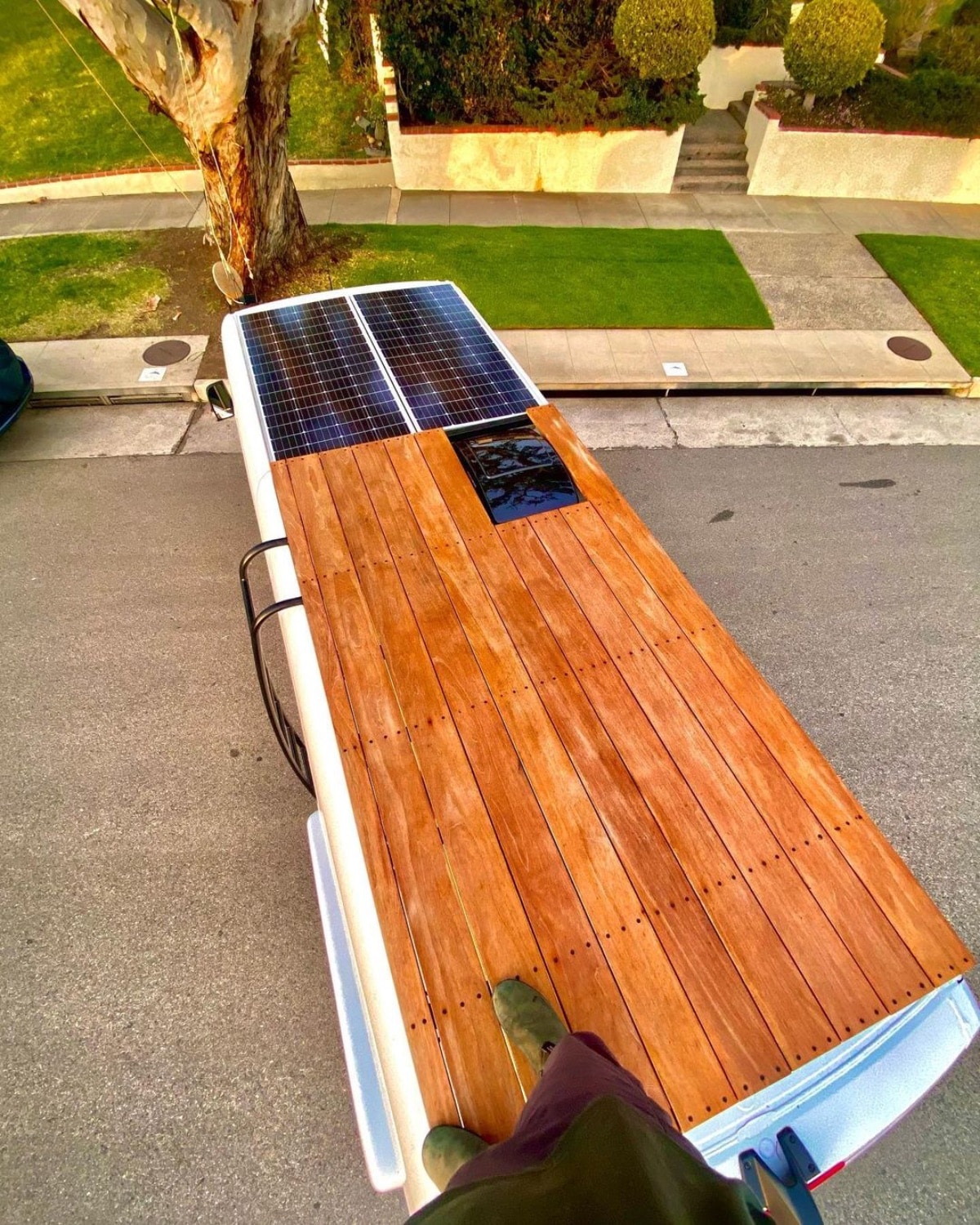
Image: HoloHoloHomes
What Is the Best Wood for a Camper Floor?
It’s crucial to consider many criteria when choosing wood for a van build.
- Strength and weight are important considerations since you want the wood to be strong enough to sustain the weight of the vehicle and its occupants without sagging or bowing.
- Durability is also critical, as you want the wood to withstand the wear and tear of regular use without deteriorating.
- Moisture resistance is crucial as vans can get damp and humid. If you use untreated wood, it can lead to structural issues or mold. Choosing a wood resistant to rot and decay that can withstand the elements is essential.
Insulation is crucial to consider if you intend to live in your van for a long time. Adequate insulation keeps the interior comfortable during cold snaps.
What Plywood Is Best for a Van Floor?
One of the most crucial components of your van’s construction is its flooring, which must be sturdy, long-lasting, and moisture-resistant. Let’s look at the best options available for a van floor.
Marine-Grade Plywood
Plywood manufactured with waterproof adhesive and specifically intended to survive the extreme conditions of marine locations is marine-grade plywood. It’s the perfect material for vehicle floors because it’s robust, long-lasting, and moisture-resistant.
Additionally, compared to other possibilities, marine-grade plywood is reasonably priced, making it a cost-effective option for van builders on a tight budget. The waterproof glue used to assemble this plywood guarantees that the wood won’t rot or decay even in humid situations, which is why professional builders recommend it for marine applications.
Plywood and MDF
Although people frequently use plywood and MDF (medium-density fiberboard) in van construction, marine-grade plywood is sturdier and longer-lasting than these options. Since plywood and MDF retain moisture, there are better choices for van flooring. These woods are more likely to warp and rot over time.
Even though they’re less expensive than marine-grade plywood, it’s vital to balance the cost savings against the risk of structural problems, mold, and future higher maintenance expenses.
Pine and Spruce
Pine and spruce are other types of wood that people frequently utilize in van construction in addition to marine-grade plywood. They’re common framing and structural support options because of their durability and affordability. However, they aren’t moisture-resistant or as durable as marine-grade plywood.
Image: Instagram
How Thick Should a Subfloor Be in a Van?
Experienced builders advise you to make a subfloor that’s at least 3/4 inches (19mm) thick. This density provides appropriate strength and support for the van’s occupants and cargo. For enhanced warmth and comfort, you can add a layer of insulation to the subfloor. You can improve the van’s overall soundproofing and fire protection by installing a thicker subfloor.
You’ll want to lay a finished floor on top once you install the subfloor. Depending on your preferences and requirements, you can choose from various materials to cover the van floor. Vinyl, linoleum, and carpet are a few of the most popular materials.
- Vinyl flooring is durable, easy to clean, and offers insulation. It’s also affordable and comes in a wide variety of designs, making it a popular choice among van builders.
- Linoleum flooring provides the same features as vinyl, but it’s made from natural materials and is more eco-friendly.
- Carpet is another option, though vinyl or linoleum are more durable choices. However, carpet provides a softer and more comfortable feel underfoot, which can be a good option if you spend a lot of time inside your van.
- Cork flooring is moisture-resistant, durable, and has excellent insulation properties. Furthermore, cork is a sustainable and renewable resource, so it’s an eco-friendly option.
Image: elisepoche
What Should I Put On My Van Floor?
Use adhesives and sealants created expressly for marine applications wherever possible. These products provide a layer of moisture, mildew, and UV ray resistance. Standard adhesives and sealants can reduce the overall durability and lifetime of the van’s floor.
Additional Van Floor Considerations
When building a van with wood, there are a few additional considerations to keep in mind. Beyond the factors already mentioned, consider attributes like strength, durability, moisture resistance, and regulations.
Weatherproofing
Any van build must include weatherproofing since it helps shield the wood from the elements. This process can involve taking precautions like using silicone caulk to seal all the joints and seams or adding an extra layer of defense like a roofing membrane. Weatherproofing the van’s walls and roof in addition to its floor is crucial to ensure a long-lasting interior.
VOCs
Many adhesives and sealants used in construction contain volatile organic compounds (VOCs), which can harm humans. If you want to ensure that the air inside your van is safe to breathe, it’s crucial to use adhesives and sealants with low or no VOCs.
Fire Resistance
Wood is a combustible substance that might not adhere to fire safety standards in some places. Before using wood in your van build, it’s vital to examine local norms and regulations regulating the fire resistance of building materials. Lumber yards can treat wood with chemicals that are fire resistant or covered with a fire-resistant barrier to boost its fire resistance.
Weight
Compared to other materials like aluminum or fiberglass, wood is rather heavy. When planning your van build, it’s crucial to take the weight of the wood into account because it will impact the van’s overall weight and fuel economy.
Thermal Insulation
Consider adding additional insulation to your van build because wood is not a very effective insulator on its own. To keep the van warm in cold weather and cool in hot weather, this can involve adding insulation to the walls, roof, and floor, as well as window covers and weather stripping.
Aesthetics
Image: HoloHoloHomes
Another factor to take into account is the aesthetic appeal, as the type of wood selected will also have an impact on the van’s overall appearance. You should pick a sort of wood that blends well with your van’s overall style and that you will be content with in the long run.
Maintenance
To keep the van in good condition, routinely check and maintain the sealants and waterproofing because moisture can affect wood. Utilizing wood in a van build requires more upkeep than other materials like aluminum or fiberglass. To preserve the longevity and toughness of the van, you should conduct a routine wood examination, cleaning, and resealing.
You must also consider the location and intended usage of the van because that influences the wood you select. For instance, marine-grade plywood is a wise choice if you intend to drive your van to a coastal region because of its resilience to humidity and saltwater. However, solid wood might be a fantastic choice if you want to utilize your van primarily in dry, inside environments.
Final Thoughts
Marine-grade plywood meets all these needs and simplifies the maintenance required to keep the floor in excellent shape.
Professional van builders recommend you use at least 3/4-inch (19mm) thickness for the subfloor to provide a stable foundation. You can top the subfloor with a finish floor to improve your van’s interior aesthetics. Ensure your finished choice is durable, easy to clean, and offers insulation.
It’s important to note that the materials you choose for your van build must comply with certifications and regulations. Check your local laws about the requirements for van builds and healthy materials. With careful planning, research, and attention to detail, you can create a van that is both functional and beautiful, which you’ll be proud to call your own.

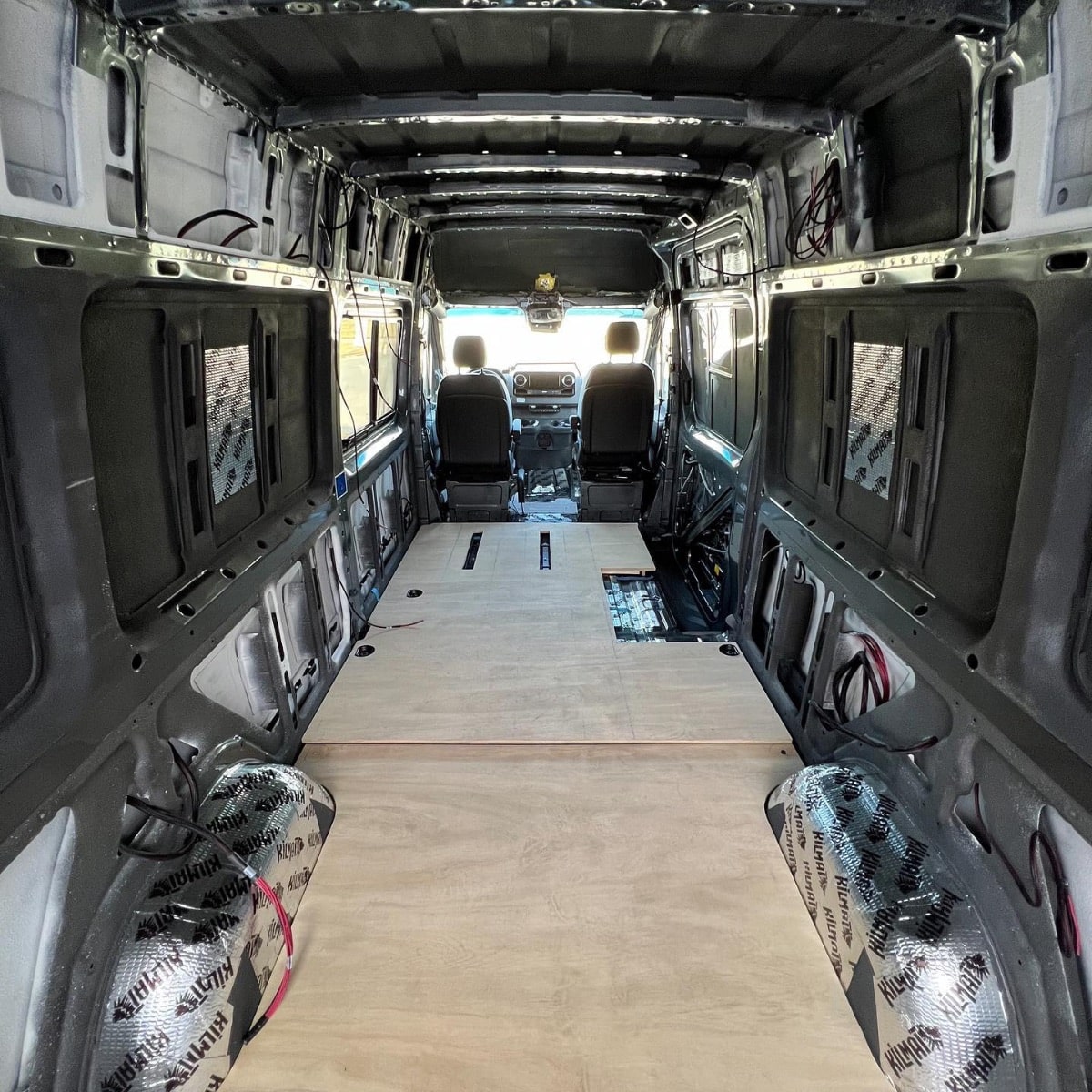
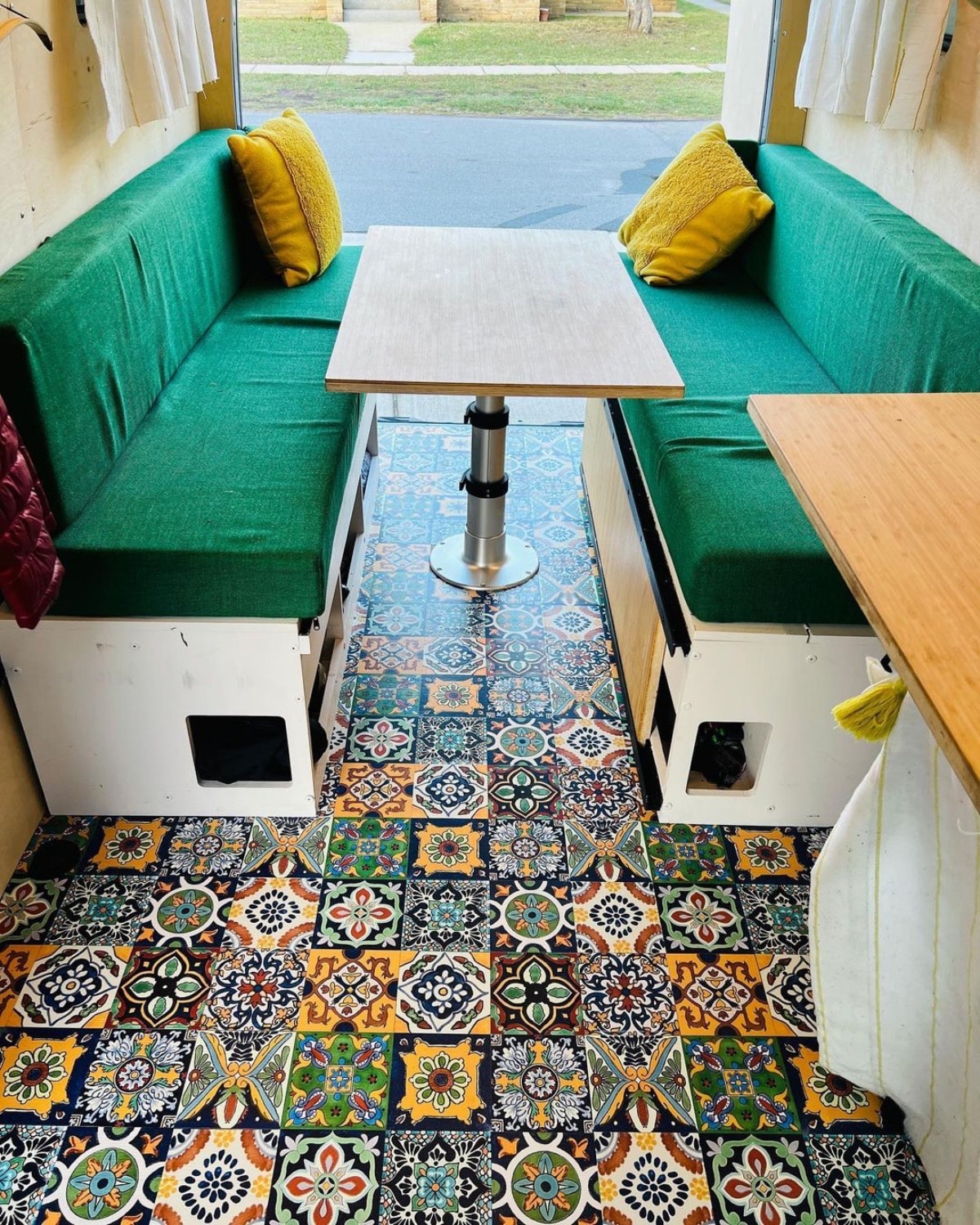
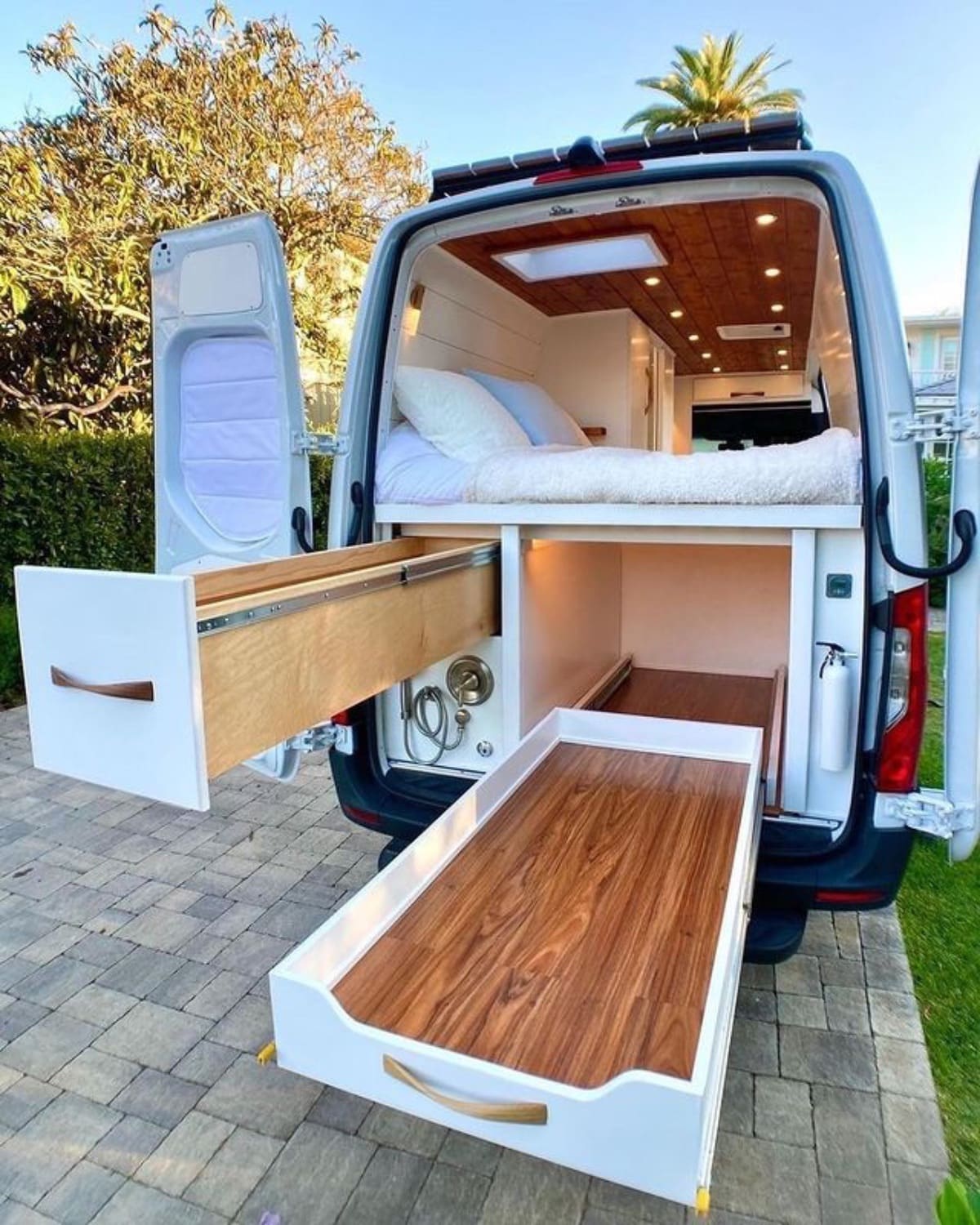
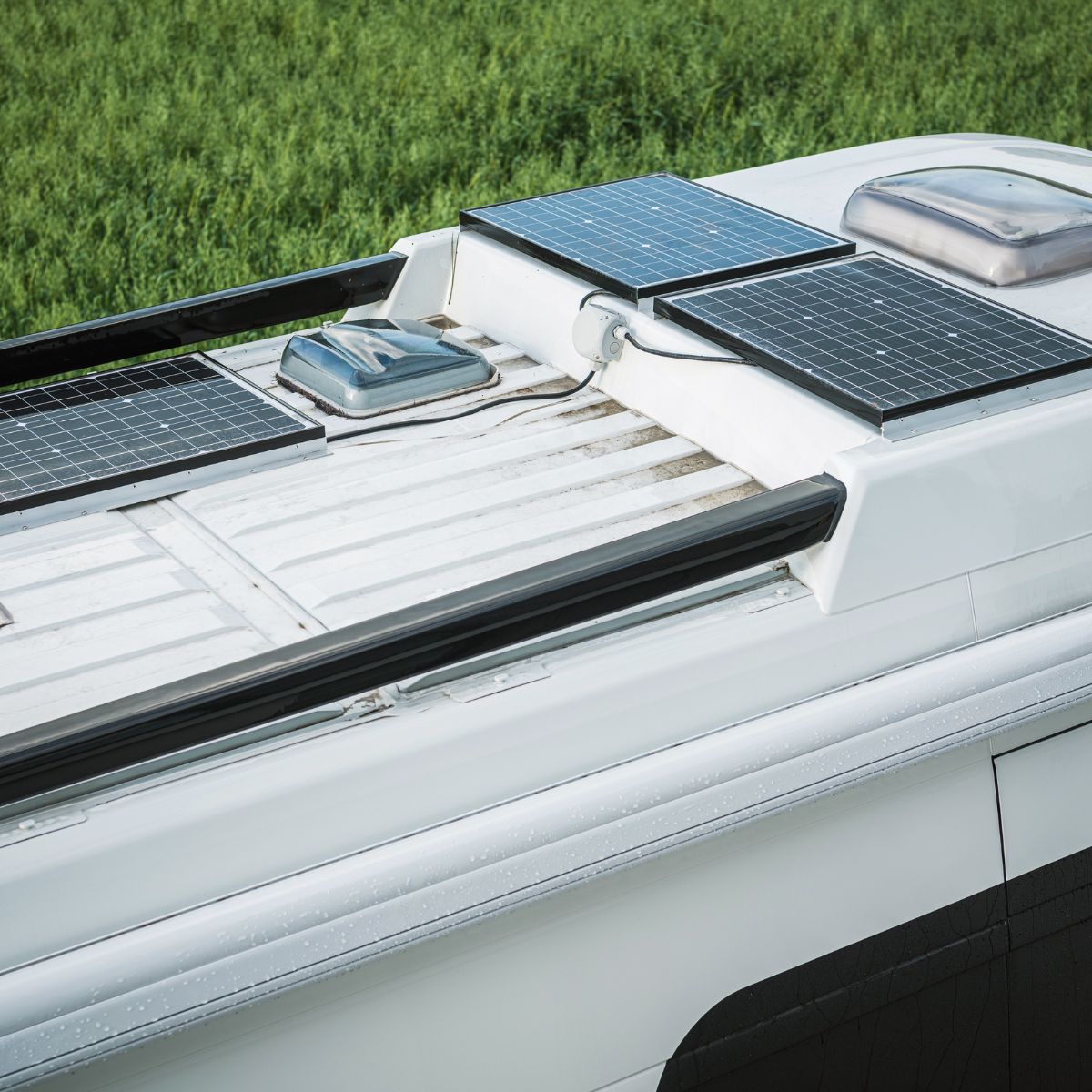
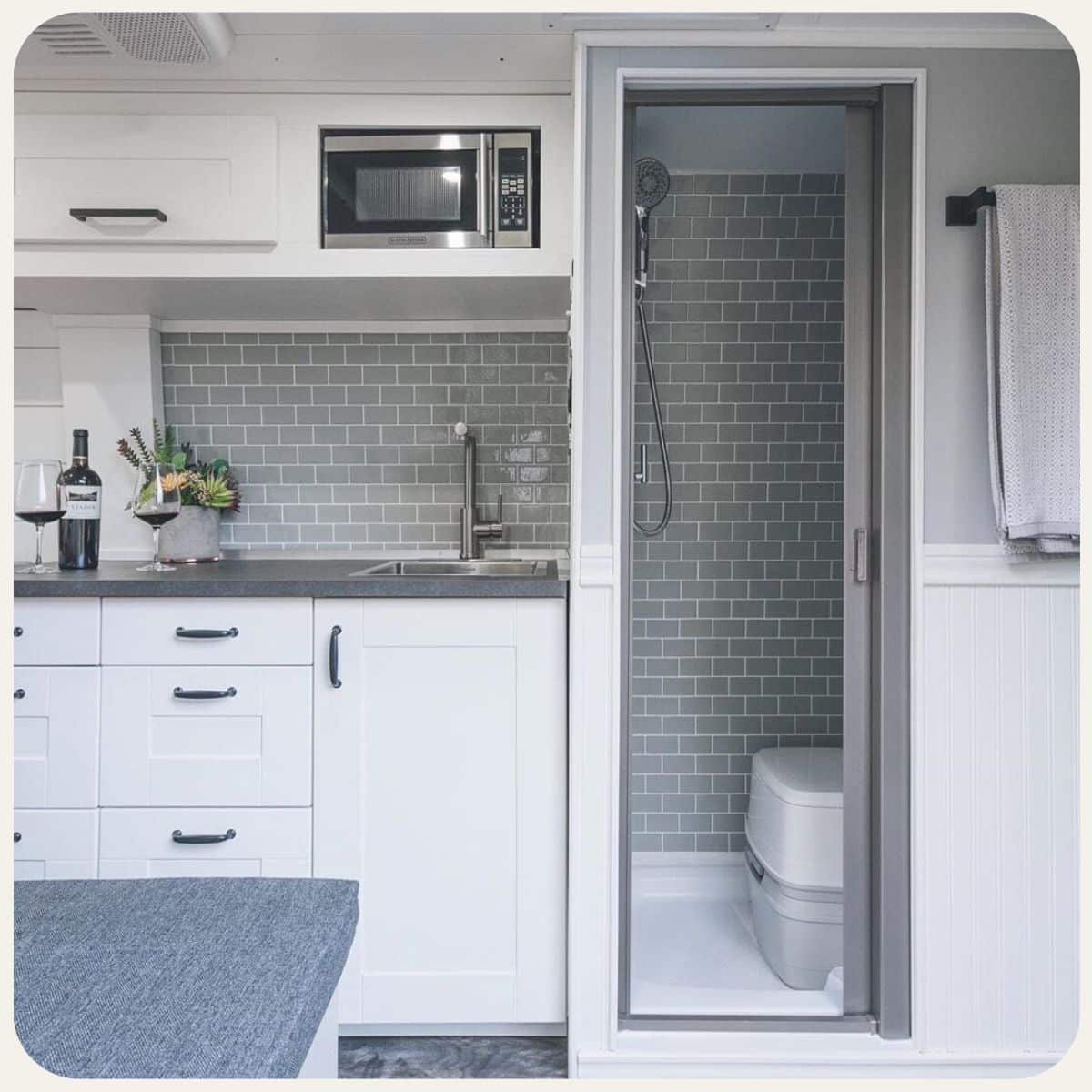

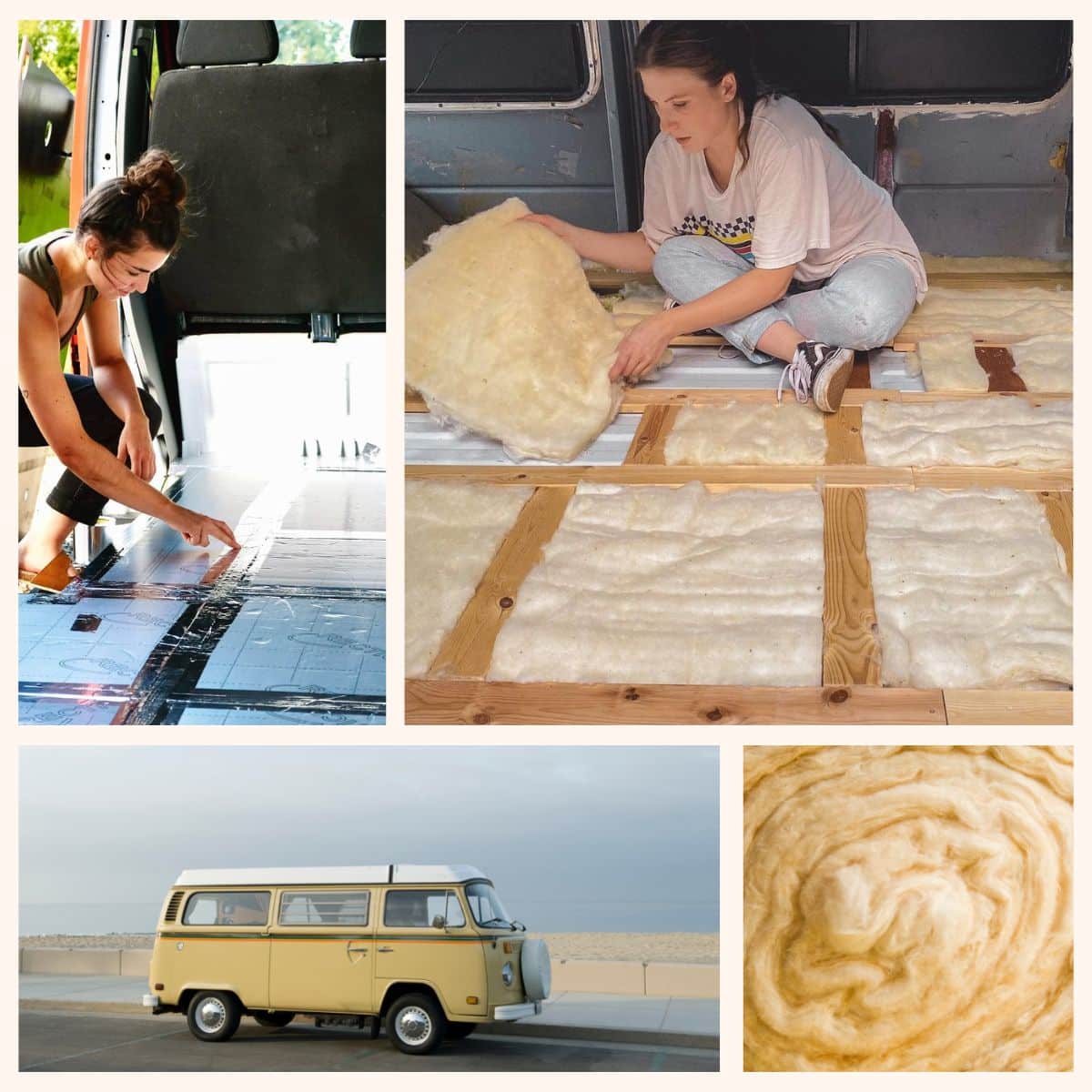
Leave A Comment